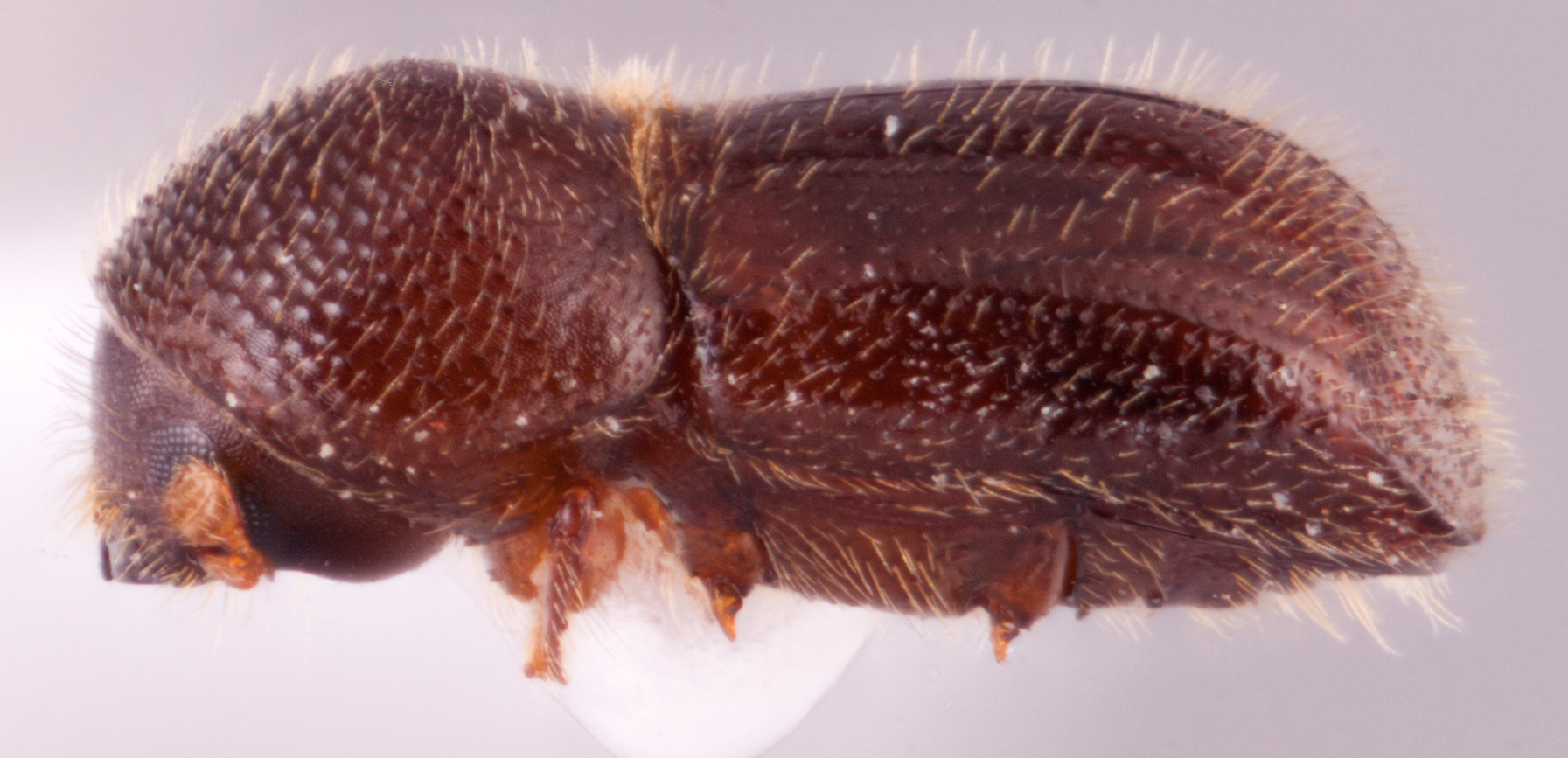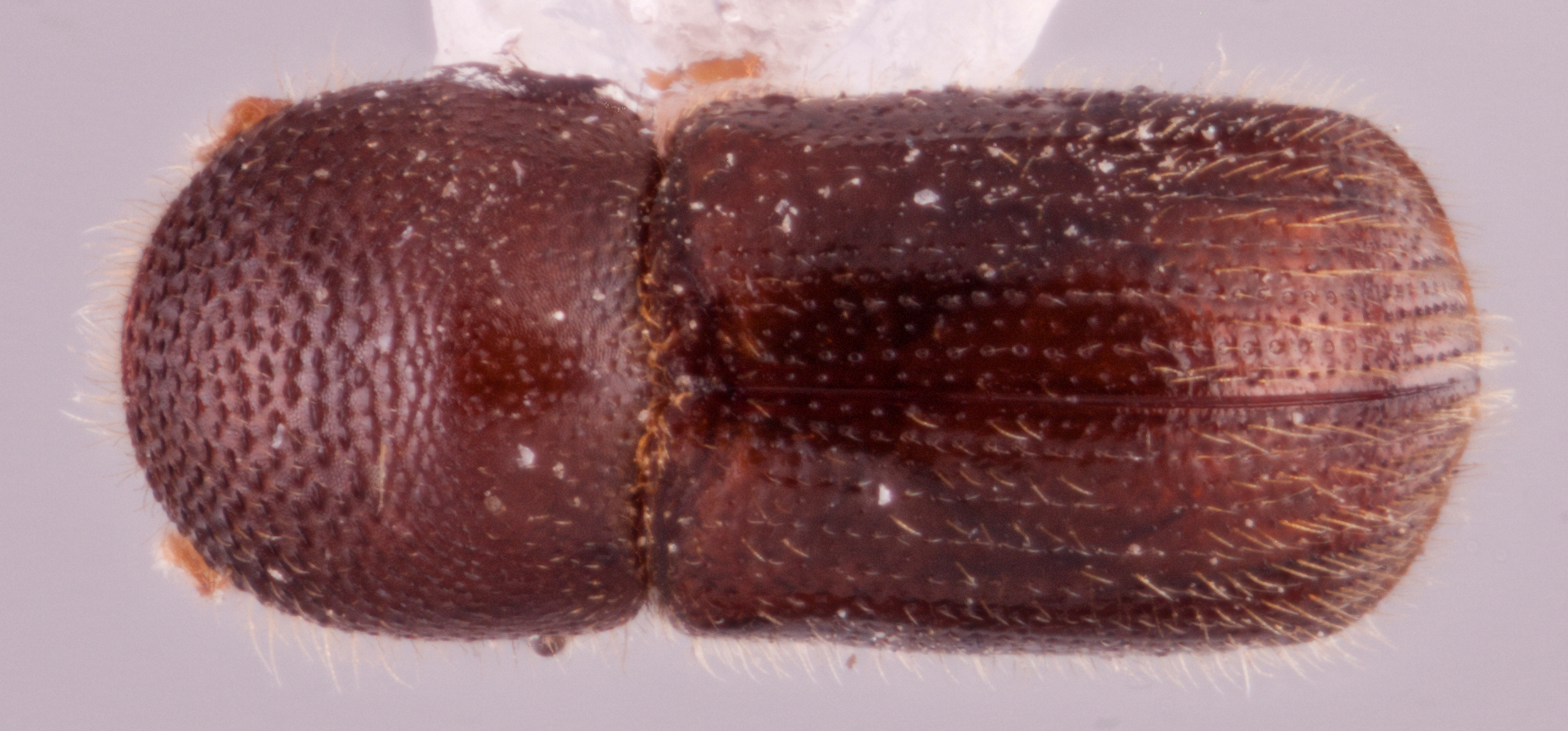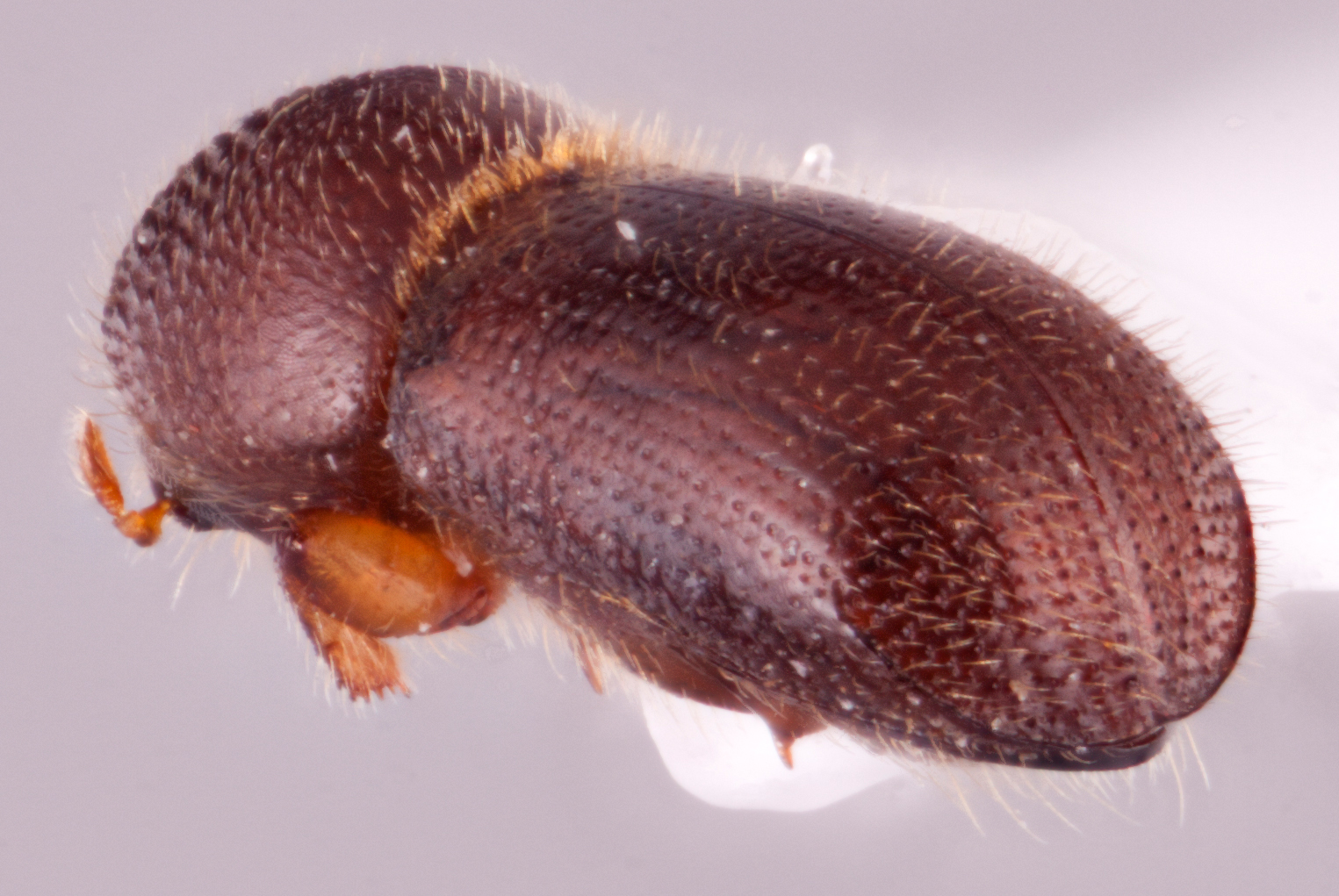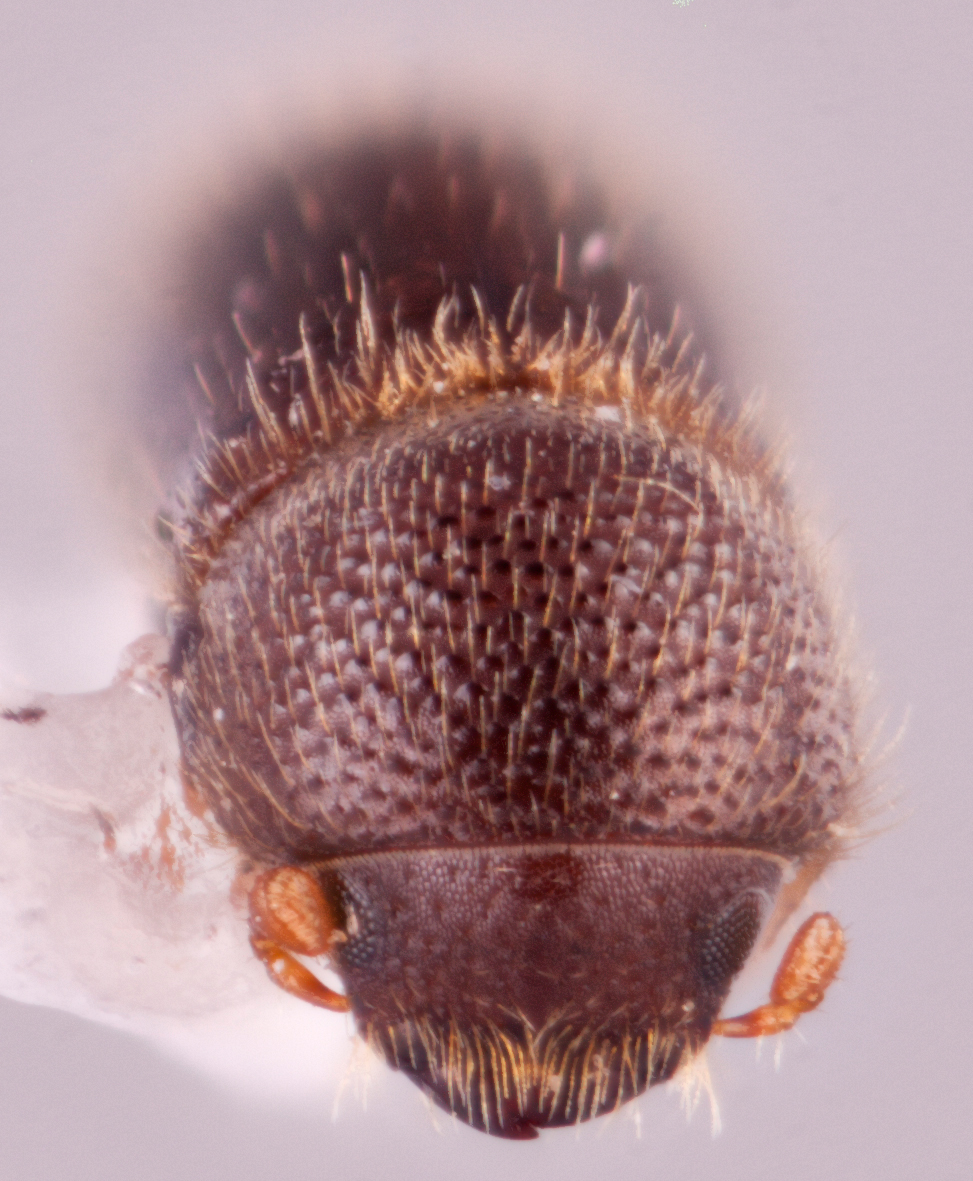Microperus quercicola
|
Microperus quercicola lateral; R.K. Osborn |
|
Microperus quercicola dorsal; R.K. Osborn |
|
Microperus quercicola declivity; R.K. Osborn |
|
Microperus quercicola frontal; R.K. Osborn |
Taxonomic history
Xyleborus quercicola Eggers, 1926: 146.
Microperus quercicola (Eggers): Smith et al., 2018b: 396.
Synonyms
Xyleborus izuensis Murayama, 1952: 16. Smith et al., 2018b: 396.
Xyleborus semistriatus Shcedl, 1971b: 382. Smith et al. 2022b: 165.
Diagnosis
1.8−2.0 mm long (mean = 1.96 mm; n = 5); 2.38−2.86 times as long as wide. This species is distinguished by the elytralelytral:
pertaining to the elytra
discdisc:
the flat central upper surface of any body part (e.g. pronotum and elytra) flat; elytralelytral:
flat; elytralelytral:
pertaining to the elytra
declivitydeclivity:
downward slope of either the pronotum or elytra
 short, steep; elytralelytral:
short, steep; elytralelytral:
pertaining to the elytra
declivitydeclivity:
downward slope of either the pronotum or elytra
 granulate from basebase:
granulate from basebase:
point or edge closest to the body; opposite of apex to apexapex:
to apexapex:
point or edge furthest from the body; opposite of base
 , granulesgranule:
, granulesgranule:
a small rounded protuberance, like grains of sand
 small, as abundant as strial punctures, granules dense, separated by a the width of one granulegranule:
small, as abundant as strial punctures, granules dense, separated by a the width of one granulegranule:
a small rounded protuberance, like grains of sand
 ; declivitaldeclivital:
; declivitaldeclivital:
pertaining to the elytral declivity
surface shiningshining:
appearing glossy or bright in luster; referring to a surface that is polished and reflects light well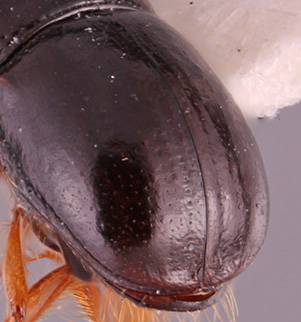 ; posterolateralposterolateral:
; posterolateralposterolateral:
relating to end of the side part/portion
 costacosta:
costacosta:
elevated ridge that is rounded at its crest, not necessarily with sharp appearance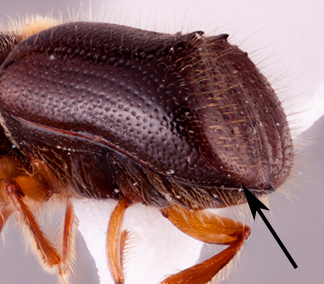 strongly carinate; interstriaeinterstria:
strongly carinate; interstriaeinterstria:
longitudinal spaces along the elytra between the striae, which is not as<br />
impressed and bear smaller punctures.
 densely setose, setaeseta:
densely setose, setaeseta:
small hair-like or scale-like structure
fine, hair-like as long as the width of an interstriainterstria:
longitudinal spaces along the elytra between the striae, which is not as<br />
impressed and bear smaller punctures.
 ; and strial punctures setose, setaeseta:
; and strial punctures setose, setaeseta:
small hair-like or scale-like structure
recumbentrecumbent:
pertaining to setae that are flat against the cuticle
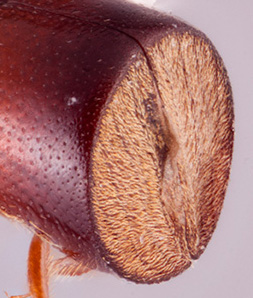 , hair-like, less than a strial width.
, hair-like, less than a strial width.
May be confused with
Microperus kadoyamaensis and M. pometianus
Distribution
China (Guizhou, Hong Kong, Jiangxi, Sichuan, Zhejiang), Japan, West Malaysia, South Korea, Taiwan, Thailand
Host plants
This species is polyphagous and has been recorded from Cinnamomum (Lauraceae) (Murayama 1952Murayama 1952:
Murayama J. 1952. Notes on the scolytid-beetles (Coleoptera) from southern and western parts of Izu Peninsula, Shizuoka Prefecture. Bulletin of the Faculty of Agriculture, Yamaguti University 3: 15-23.), Diospyros (Ebenaceae), Fraxinus (Oleaceae), Carpinus (Betulaceae) (Mandelshtam et al. 2018Mandelshtam et al. 2018:
Mandelshtam M Yu, Yakushkin EA, Petrov AV. 2018. Oriental ambrosia beetles (Coleoptera: Curculionidae: Scolytinae): new inhabitants of Primorsky krai in Russia. Russian Journal of Biological Invasions 9(4): 355-365. https://doi.org/10.1134/S2075111718040082) and “oak trees” (Fagaceae) (Eggers 1926Eggers 1926:
Eggers H. 1926. Japanische Borkenkauml;fer, I. Entomologische Blauml;tter 22: 145-148.).
DNA data
Sequences available for COI and CAD.

